Polymer vs. Metal Additive Manufacturing: Trends & Projections in Consumer Products
In April 2024, Xpiens revealed that VoxelMatters recently published comprehensive reports on the additive manufacturing markets for polymers and metals. The findings are quite revealing, especially for the consumer product sector. In 2023, the polymer additive manufacturing segment achieved a significant milestone, generating total revenues (encompassing hardware, materials, and services) of approximately $774 million, a figure that starkly contrasts with the $174 million generated by metal additive manufacturing.

This disparity underscores the broader adoption of polymer-based 3D printing technologies in contemporary consumer products. Factors such as a wider range of applications, cost advantages, and ease of use are driving the growth of the polymer additive manufacturing market.
The versatility of plastic printing has enabled an expanding array of consumer goods to be produced using this technology. Meanwhile, the cost of 3D printed metal parts often exceeds the price points typical within most consumer product industries, further widening the gap between the two technologies.
An in-depth survey and study of 899 polymer additive manufacturing companies were conducted. Polymer 3D printing has found applications in various sectors within the consumer goods industry, including footwear, eyewear, sports apparel (protective gear), sports accessories, and even bicycle and motorcycle parts. Metal 3D printing, on the other hand, is predominantly utilized in niche consumer segments like jewelry, luxury goods, design products, consumer electronics, and certain sports equipment. However, as more efficient metal additive manufacturing technologies gain broader market acceptance, this scenario is expected to evolve.

VoxelMatters' latest forecasts for the additive manufacturing markets project that revenues from polymer additive manufacturing in consumer products will surge from $774 million in 2023 to nearly $1.9 billion by 2026, with rapid growth continuing thereafter.
By 2033, revenues from polymer additive manufacturing are expected to reach around $6.7 billion.
In comparison, revenues from metal additive manufacturing in consumer goods are anticipated to hit approximately $800 million by 2027 and $2.7 billion by 2033.
The annual compound growth rate for polymer additive manufacturing is estimated at around 24%, whereas metal additive manufacturing is projected to grow at a rate of approximately 31.4%. Despite the larger market size of polymer additive manufacturing, metal additive manufacturing is expected to grow at a significantly faster pace.

The Machinery behind Additive Manufacturing in Consumer Goods
In the realm of consumer goods, the most commercially successful additive manufacturing machines are those used for model creation (primarily SLA) and final part production (mainly DLP), such as stereolithography systems.
In the metal additive manufacturing sector, the predominant production machines are those based on Laser Powder Bed Fusion (L-PBF) technology, although their use is generally limited to unique and luxurious products.
Binder jetting technology is gaining attention and targets a broader range of products, but widespread adoption is expected to take some time.
In 2023, the value of polymer additive manufacturing hardware reached $380 million, while revenue from metal additive manufacturing hardware stood at $118 million.
The revenue from polymer additive manufacturing hardware is anticipated to experience substantial growth, reaching $3.2 billion by 2033. By that time, revenue from metal additive manufacturing hardware is expected to hit $1.9 billion.
With a compound annual growth rate of 32.3%, metal additive manufacturing hardware demonstrates rapid growth from a smaller base compared to polymer additive manufacturing hardware, which has a lower compound annual growth rate of 23.7%.
Despite the higher growth rate of metal additive manufacturing, polymer additive manufacturing hardware has maintained a larger market size over the past decade and has also shown significant absolute revenue growth.
These insights indicate robust growth in both sectors, but the larger initial base and overall revenue of polymer additive manufacturing hardware suggest its more dominant position in the consumer sector.
Although starting from a lower base, metal additive manufacturing hardware exhibits an impressive growth rate, indicating an expanding market adoption and technological advancements driving its increased use in consumer goods.

Materials Aspect
Due to the higher costs and added value of applications, metal additive manufacturing materials generate a higher proportion of revenue compared to metal additive manufacturing hardware.
Overall, annual revenue from metal additive manufacturing in the consumer product sector is set to steadily increase from $13 million in 2023 to $186 million by 2033. Revenue from polymer additive manufacturing materials, starting from a higher base of $39 million in 2023, will also grow annually, reaching $285 million by 2033.
With an annual compound growth rate of approximately 30.8%, metal additive manufacturing materials exhibit strong growth from a smaller base. Polymer additive manufacturing materials, with an annual compound growth rate of about 22%, show sustained growth from a larger initial revenue figure.
Both metal and polymer materials have demonstrated robust growth trends over the past decade, with polymers maintaining higher revenue throughout. However, the relative annual growth rate is higher for metal materials, with their compound annual growth rate outpacing that of polymer materials.
Service Agencies
Revenue from metal additive manufacturing service agencies started at $43 million in 2023 and is following a stable growth pattern, reaching $548 million by 2033.
On the other hand, revenue from polymer additive manufacturing service agencies started at $356 million in 2023 and is growing annually. By 2033, this revenue is expected to reach $3.2 billion.
The annual compound growth rate for metal additive manufacturing service agencies is about 29%, while that for polymer additive manufacturing service agencies is approximately 24.6%, indicating sustained growth on a larger initial revenue base.
According to VoxelMatters, service agencies in the consumer additive manufacturing sector currently represent a relatively small business opportunity, but they are gradually expanding.
Polymer additive manufacturing continues to hold a higher share of revenue, consolidating its dominant position in the market. Polymer products such as eyewear, sports apparel, and footwear offer significant opportunities for additive manufacturing service providers to implement specialized production lines.
Although total revenue is lower for metal service agencies, they are still expanding at a steady pace, indicating that demand for metal additive manufacturing services is also growing.
Futuristic and advanced metal objects like the Barrelhand Monolith watch will help usher in a new era of consumer products.
Subscribe to Xpiens to learn more about the latest news in the 3D printing industry.
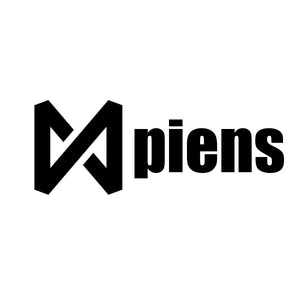

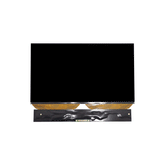
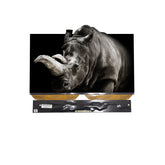
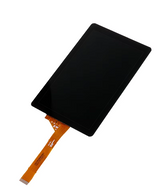
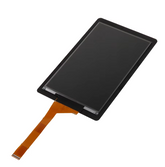
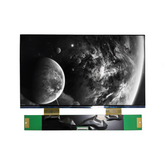
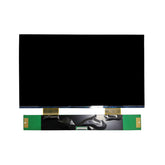



Deja un comentario
Tenga en cuenta que los comentarios deben aprobarse antes de que se publiquen.